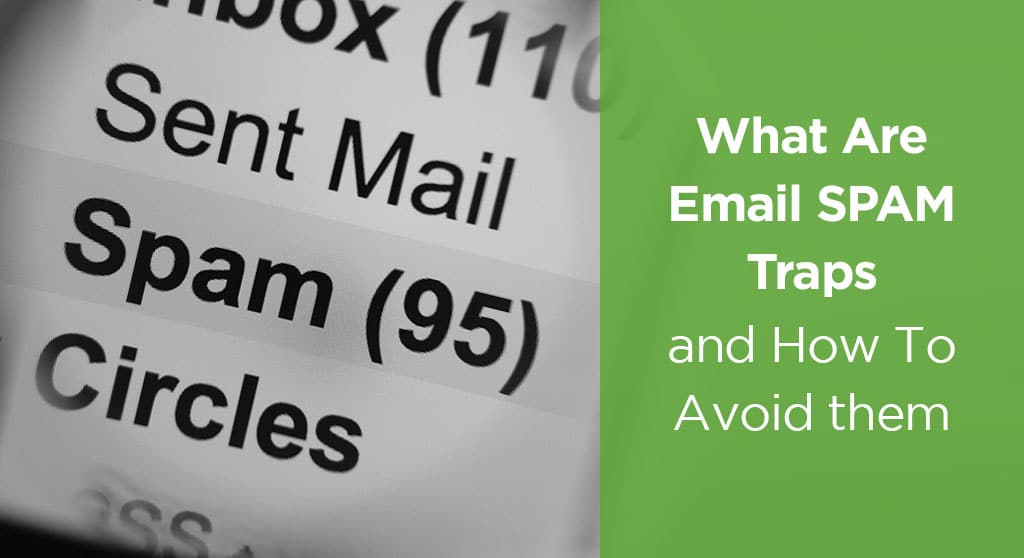
Internet Service Providers (ISPs) and email spammers have been at odds since the invention of email. In fairness to ISP’s none of us want to get spam email. So we appreciate that ISP’s create things like spam traps to weed out bad emailers, and protect our inboxes.
So let’s take a look at what a spam trap is, and then how to avoid getting our domains blacklisted as we’re just trying to do good marketing work.
What is a SPAM Trap?
Have you ever watched a cop show and there’s a dirty cop who’s got a problem with a good one? So he takes some kind of evidence and plants it on the good cop, and the sergeant has to suspend the good cop while it gets sorted out? That’s basically what a spam trap is, except it’s to catch the bad guy.
ISPs and blacklist providers create email addresses that don’t belong to anyone, but get put on email lists that are purchased by marketers and spammers. When you send an email to one of them they may blacklist your email address and not allow you to send emails to anyone.
It’s one thing if you’re blacklisted by a small ISP or a small business, but if it’s GMail, or Yahoo, it could mean lot’s of your real email addresses won’t get your emails.
How Do you Avoid Spam Traps?
This is actually pretty easy, it’s like saying how do you avoid getting arrested? Don’t break the law! Well unfortunately the two most common ways to get caught in a spam trap are like the two simplest ways to get arrested: need and not paying attention.
Don’t Buy Lists
Buying marketing lists can be tempting, especially for a new business. You’re trying to get your business off the ground, money is tight, so what do you do? You find a list of CEO’s in businesses that would be your optimal client. You start demon dialing, and of course, e-blasting.
But it turns out that of the 4,000 emails you purchased 25 of them were not real businesses or at least not real email addresses. You blast out a great email, so well designed, perfect language, everyone should sign up with you, you think to yourself.
However after hitting send, about 30 mins later you get a notification from you email sending service that your address has been flagged from their spam trap that 1% of your emails were spam addresses.
They of course won’t tell you who the bad email addresses are, so you’re left with a list that could get you kicked off their platform, and a few dollars poorer because you wasted money on that list. Buying emails, like crime, doesn’t pay.
Clean Up Your Lists
Ignorance of the law excuses no one. If you didn’t know that it was 25 mph school zone and you got caught driving 60, you’re probably still going to jail. The same goes for email lists. This scenario usually applies to older businesses.
They may have been collecting emails since email was invented. Then they go and switch to another email provider or a new software, and they import all of their contacts.First email blast they send out, they get flagged.
They’re of course going to plead with the officer (email sending service) saying that they didn’t know, that the list was old. But that plea, like most with the police, will fall on deaf ears. What they should have done is been cleaning their lists as they went.
Emails that weren’t interacting, and especially if they bounced, should have been removed from their contacts list. They’re not viable, so they’re not a contact.
Conclusion
These two items seem easy to avoid, but unless you’ve been in the same situation, you don’t know how frustrating it can be. I empathize with legitimate businesses trying to grow or maintain their contacts over time. Spammers have ruined it for everyone – I know. But as regulations in Europe get stricter, it’s only a matter of time before it comes across the pond.
If you’re a marketer, you know that the best way to get sales is to market to those that want to be marketed to. If they didn’t sign up for your list, or haven’t interacted with you in years, do they really want to be marketed to?
While this article is about not getting put into spam folders or getting caught by spam traps, the reality is that doing these things just makes for better marketing all around.






